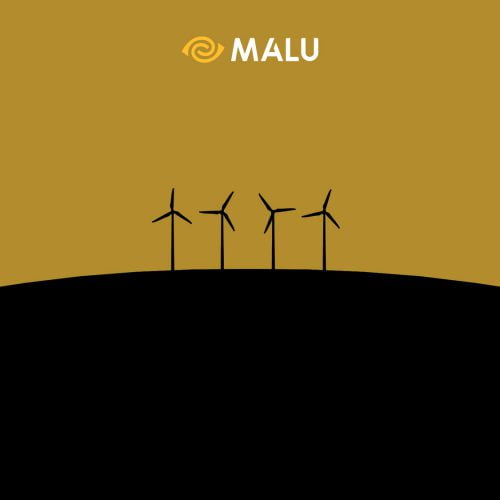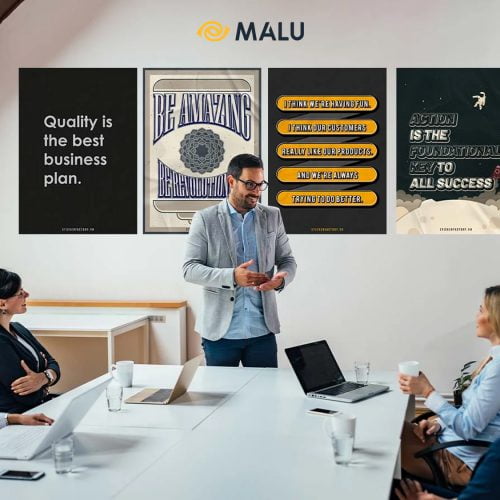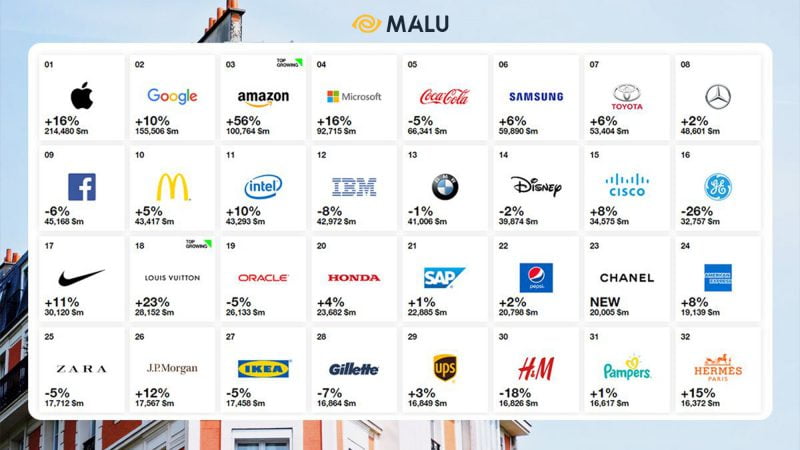
Today, brand value – the value of a brand is equal to or greater than all other tangible assets of a business. Brand value is a key factor in positioning success, determining the difference of a business compared to the rest of competitors.
Therefore, you need to have a tool to accurately measure this extremely important asset. But, brand equity is a rather abstract concept, how can an intangible be measured?
The following article will give you a new perspective on determining brand value, and at the same time dive into the analysis of the problem that any business is struggling to find a solution: How can customers be willing to pay big for a certain product/service?
>>> Learn more:
- Building a brand from zero
- Brand Health: Measuring Brand Health
- Brand Extension: What is Brand Extension Strategy?
- What is Persona? Building Customer Portraits
Mục lục bài viết
ToggleBrand values and tangible/cash value
Many studies on brand equity have tried to find an answer to the question: Why do consumers accept to pay a huge amount of money for some well-known brands, even if the selling price of these products/services are much higher than the average price (average among similar items).
It is extremely difficult to separate brand value from the intangible values that it brings to customers. In fact, very few customers choose to buy a product / service just because of the tangible and intangible benefits that the product brings to them, without accompanying the brand name of the product.
There was a survey that asked customers to set a price for a car, just by looking at a picture of that product. The special thing of the survey is that the image of the car will remain the same, except for the brand name badge on the car (which will be changed after each customer survey).

Interestingly, if the vehicle was fitted with a Mercedes badge, respondents would value the product more than the vehicle itself, but with a Ford or Wolkswagen badge. In this case, the value of the brand contributes about 10% of the total retail value of the product.
In the context of this article, we dive into how we can value businesses based on their intangible value (you can determine the tangible value of the product yourself).
>>> 10 Product Pricing Strategies In Marketing
Goodwill, and the value of the brand
When valuing a business, people often include the intangible value of that brand. This involves determining customer loyalty to the brand itself. Because loyalty is also an important element in building a brand.
From a financial perspective, however, goodwill includes much more than simply customer loyalty. They also include many other intangible assets that can make a business make a lot of money from it, far beyond what tangible assets can bring.
The commercial advantage here is the staff working in the company (including key members such as a group of skilled workers, management team, researchers,…); business know-how; exclusive distribution contract; patents;… All these elements bring certain values to the business.

Recognizing the existence of these intangible assets in the business is extremely important, but unfortunately, they are often ignored by businesses (to focus on developing the value of these assets). other tangible assets).
Goodwill can be broken down into three main groups:
1. The first is the natural advantage that businesses naturally enjoy, mostly because they are in a monopoly position in the market, enjoy many privileges from the government, or are a pioneer in a new market. The niche is in the process of being discovered.
2. The second group is the group of assets that accountants in the company have difficulty in accurately valuing them, making it possible for some assets to be overvalued / lower than their true value.
3. And the last group, they are clearly separate intangible assets, such as the product’s distribution system, key staff, or the product’s core customer base. However, the separation of the elements in these three classifications is often ambiguous, making their valuation difficult and complex.

Brand valuation
In the past few years, there have been many organizations that have organized the grouping of the most valuable global brands. One of the most prestigious and widely recognized lists is the Interbrand Top 100 Brands .
This organization evaluates the value of a brand based on many different criteria, from evaluating the overall brand management strategy, marketing cost allocation, Marketing ROI, brand expansion strategy, to financial issues such as M&A results, balance sheet recognition, franchise performance, etc.

You can refer to the list of the most valuable global brands to get an idea of how the specific criteria of this assessment work.
However, the brand valuation also caused mixed public opinion. Partly because more and more businesses recognize “brand” as a valuable asset that can be measured and included in the balance sheet of the business.
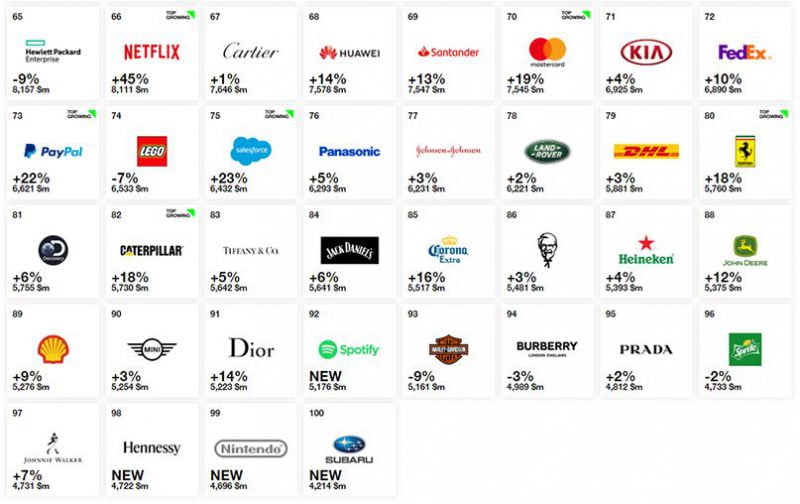
In other words, the “brand” is no longer considered a special intangible asset, nor is it considered part of the “goodwill” of the enterprise (which is difficult to calculate and usually not included in the balance sheet).
Matters needing attention
The reason a business’s brand is often vulnerable, because they are completely built by people’s perception of it. Awareness must be formed and nurtured over a long period of time. And sometimes, just one misstep can ruin all the achievements.
Back in the 1990s, when the Perrier carbonated mineral water brand had its worst crisis in history, when its water product was found to contain benzene. The company rushed to find the cause of the problem.
After all, it stemmed from a careless behavior by a staff member in charge of water treatment and purification operations, which led the company to recall more than 160 million bottles of Perrier water. This scandal caused the value of the brand to plummet without stopping.
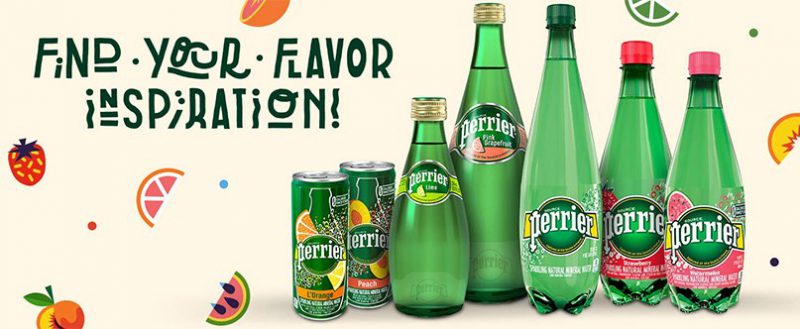
Valuing a brand’s assets on a balance sheet can be difficult, requiring you to separate the brand’s intangible value from its other intangibles. In the case of Perrier above, brand equity could completely disappear in a flash.
This raises another controversial issue as to whether or not the brand value should be accurately determined on the balance sheet, or should only be incorporated into the goodwill of the business, which is quite abstract. object, dependent on the external environment and can only be determined roughly?
If you are wondering about the brand positioning by the tangible value it brings to the business, try to refer to another way of evaluating the brand, completely based on its impact on the surrounding environment. : CSR (Corporate Social Responsibility) – Brand is socially responsible .
Epilogue
Brand is clearly a valuable asset to a business. The business becomes more valuable thanks to the brand’s position in the market.
Over the past few years, some big brands have tried to value brand assets, and try to include them in their regular balance sheet (as a tangible asset, like any other asset class). ). Whether or not to value brand value is a controversial issue. Each side has its own argument.
>>> Create brand personality – brand personality
But, there is one thing that no one can deny: If you stop all branding activities, your brand will die within minutes.


